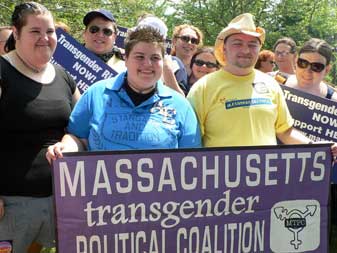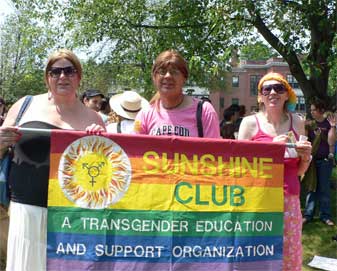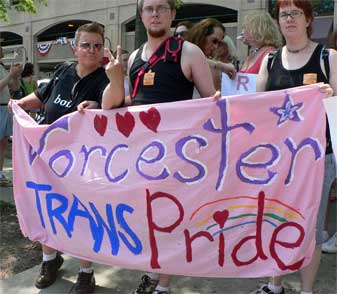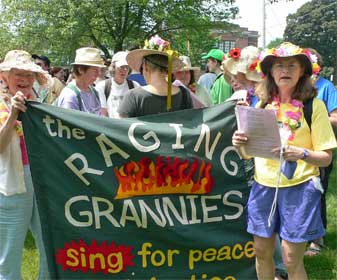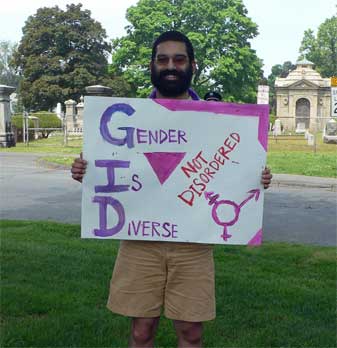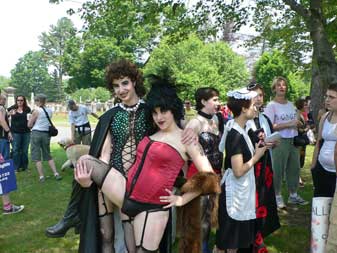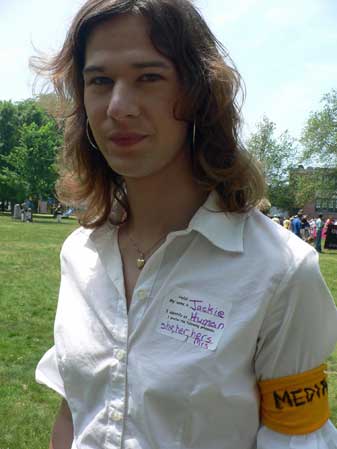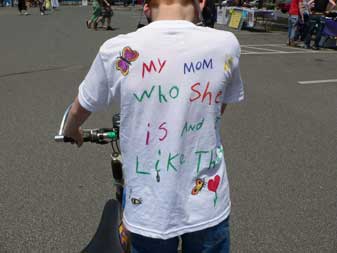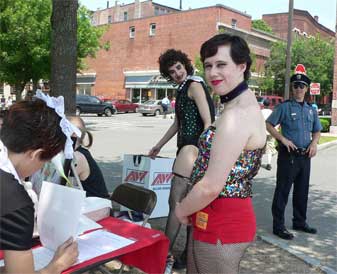In poet and critic Reginald Shepherd’s new book, Orpheus in the Bronx: Essays on Identity, Politics, and the Freedom of Poetry, I find it telling that the comma in the title is placed after “identity”, deliberately severing the phrase “identity politics”, just as these lyrical essays make it their mission to champion a poetic imagination that is not subordinate to the politics of race, class, and sexual orientation.
Whereas critics may chide him for not embracing certain subjects or modes of diction that are recognizably “black” or “gay”, Shepherd questions the assumption that those tropes always represent the authentic self. Without denying his experience of poverty, racism or homophobia, he suggests that he should not be obligated to build his poetic identity on the unchosen conditions of his oppression. Otherwise we lose the main hope that literature offers us, a space uncolonized by the powers that be.
The identity card school of poetry is very popular in our current era, when rhetorical fantasies of democracy and equality in cultural life have become tin-pot substitutes for the real things in social, political, and economic life. But literature is one of the few areas of life in which I do not feel oppressed, in which I have experienced true freedom. In the literary realm one is not bound by social constructions of identity, or required to flash one’s assigned identity card: one can be anyone, everyone, or no one at all. This is one of literature’s most precious qualities, the access it allows us to otherness (including our otherness to ourselves), and it is one of the things that I cherish most about poetry.
…I have written poems that directly address identifiably “black” subject matters, and it is disproportionately those poems that tend to be reprinted and to be discussed, those poems for which audiences perk up at readings. But I am just as much a black person when I write about spring snow or narcissus blossoms as when I write about the South Bronx or the slave trade, and I am just as much not. (Though the same black lesbian performance poet who implied that literacy was oppressive also asserted that poems about spring or snow had no relevance to black people or to poor people or to HIV positive people. Presumably in this view black people, poor people, HIV positive people have no experiences other than being black, being poor, being HIV positive, are nothing but their social labels, and thus they don’t experience spring or snow. I hardly need point out what a reductive and even dehumanizing perspective this represents.)
(“The Other’s Other”, pp.51-52)
We also deceive ourselves that politically correct poetry is a substitute for actually improving the conditions of oppressed groups. (Thus he refuses to join the other camp of the academic culture wars, the naively color-blind conservatives.) This dovetails with another of Shepherd’s major themes–that art is not the world, and that its value lies in making visible the creative tension between representation and reality.
Poetry is potentially liberating because its uselessness marks out a space not colonized by or valued by capital. Its “obsolescence” is also its resistance to being easily consumable; its loss of “relevance” is also a freedom to keep alive certain human possibilities. In this sense, the drive to make poetry “relevant” is a concession or a surrender to instrumental values, to the imperative of use and functionality: poetry had better be good for something. And poetry simply isn’t politically efficacious; as Auden so perceptively noted, “Poetry makes nothing happen.” The conflation of the existence of social, political, and economic elites with muddled notions of intellectual or aesthetic “elitism” is sheer obfuscation. The power elite in this country care nothing for art or culture; they care about money and power and the means to acquire and retain them. Art is not among those means.
…Poetry’s preservation of mystery is its preservation of a space not colonized by capitalism’s totalizing impulse. This is also the preservation of a space not colonized by instrumental reason. The poem embodies this space in its specificity as an event in language: a good poem is not simply a recounting or reenactment of an extralinguistic event, but an occasion of its own. The poem is a new thing in the world (or better: it is a new event), not simply a copy or an account of an already existing thing: it cannot be reduced to its “meaning” or its “content.” Part of what poetry does is remind us that things and events, including language, including ourselves, aren’t as accessible or as apprehensible as we think they are. The Russian Formalist Viktor Shklovsky described art as a mode of defamiliarization, making the familiar strange, or perhaps revealing it to have been strange all along when not seen through the smudged and blurred lens of habit and routine.
(“The Other’s Other”, pp.53-54)
Though I don’t think Shepherd is religious, his worldview here could be described as sacramental. Substitute “the Eucharist” for “poetry” in the last paragraph above and you get something pretty close to the Catholic position. I began to believe in the presence of God in the sacraments one day when I held up the wafer and realized
all matter is mysterious. The Eucharist just names that fact openly, and calls us to rejoice about it. It is not a case of turning something comprehensible into something alien, as the rationalist objection to our “mumbo-jumbo” has it. “Tell all the truth but tell it slant,” Dickinson wrote, putting her finger on the reason why poetry is not inferior to prose.
Other offerings in this eclectic book range from an autobiographical essay to a defense of beauty and critical analyses of authors such as Jorie Graham, Alvin Feinman, and Jean Genet. I may write follow-up posts on these sections after I finish the book, but meanwhile, Shepherd’s defense of the boundary between art and life has cleared a way forward for me to understand some serious problems with my own creative process.
Never inclined to enmesh art with politics, I was unaware until about four days ago that I was enmeshing art with therapy, and also with evangelism, in a way that turned each objective into a pale simulacrum. Repeat after me: Solving problems in your novel is not the same as solving them in your life. And what is perhaps the corollary: If you cannot convince yourself that your characters can find love, hope, forgiveness or purpose, you may just be traumatized and need a week off to play with your Barbie dolls.
What seems like a plot problem (how can I rescue my characters?), or, God help us, a metaphysical problem (there is no help for anyone), may be as simple as personal burnout. I was indulging in a sort of indiscriminate “authenticity” as a reaction against feelings of shame and fear about early traumatic experiences, which through God’s grace I am moving beyond. However, as Shepherd’s essays reminded me, art necessarily involves manipulation, distancing, a smokescreen, a defense. A fruitful distortion and transposition of your raw emotions and uninterpreted facts. It’s
art. Artifice. Clothing. And that’s as it should be. Go ahead and put on the gospel armor, but if you’re going to Iraq, you also need a Kevlar vest.
For someone who supposedly believes she is saved by grace alone, I have been treating my novel less like a work of art with an independent internal logic, and more like a self-administered version of the Rorschach Test. Oh no, Prue is taking her clothes off and Ada is smoking crack–what an insane person I must be, to think this up! I had better stay home and shut up before I spread my inescapable cloud of melancholy over all these poor souls who need a book with a happy ending to lead them to Jesus.
If art is not therapy, neither is it the gospel. The Jesus in my novel is not the real Jesus, and any characters who may (despite their best efforts) get saved are not real people. Their salvation or lack thereof has no bearing on my own. To the extent that I forgot this, I began to fear that I would never see God face to face, because I was looking for Him in a place where only His shadow is visible.
Contra Marianne Moore, there are no imaginary gardens with real toads in them. However, there are real gardens.
What is left, then, of my vocation to be a Christian artist? To treat art more like the other activities in my life, like baking cookies or updating the Winning Writers database. It’s something I do
while being a Christian, but it’s not the arena in which my spiritual fitness is proved or disproved. As the gospel song says, “The old account was settled long ago.” The challenge I must take on is not how to preach through my art, but how to let my art be itself. Just itself, not a substitute for prayer, evangelism, self-worth, or confronting actual sources of suffering that I learned to palliate with imaginative escape when I lacked the power to change my circumstances.
